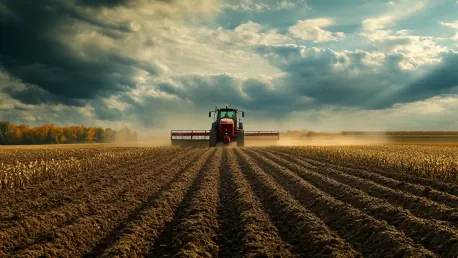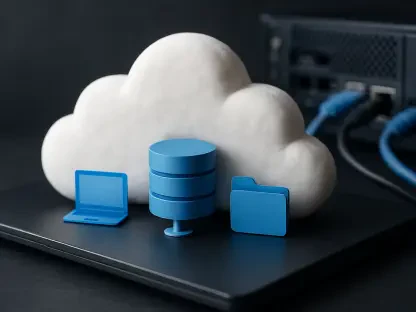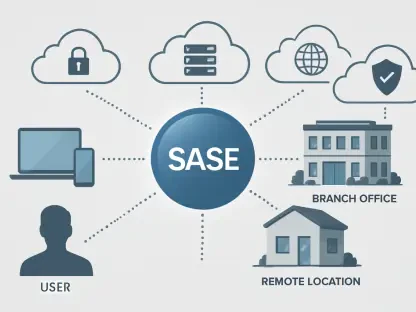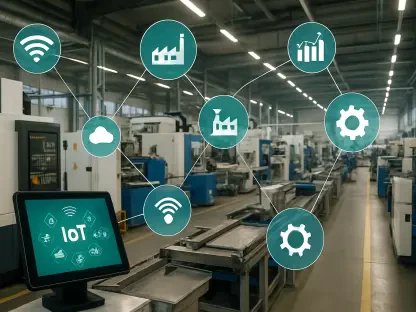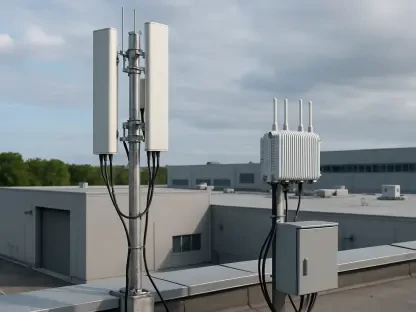Farming has always been a complex and labor-intensive occupation, requiring careful planning, resource management, and timely decision-making. The challenge of producing sufficient food to meet the demands of a growing population is compounded by labor shortages in the agricultural sector. Modern farmers are tasked with navigating these challenges while adhering to sustainable practices, making the integration of technology in agriculture not just beneficial but necessary. Cloud-based technologies are rapidly transforming the agricultural landscape, offering innovative solutions that enhance efficiency, productivity, and sustainability in farming practices.
The Complexity of Real-World Farming
Cloud-based technologies offer a high-tech solution to inefficiencies in modern agriculture, addressing the irregularly shaped fields, varying terrains, and limited resources farmers face daily. Unlike simplified farming simulations, real-world agriculture requires advanced tools to manage these complexities effectively. Every decision on a farm can have significant implications, from choosing the suitable fertilizer to determining the optimal planting time. The stakes are high, with an expected global population of 10 billion by 2050 and a shrinking agricultural workforce further stressing the need for precision and efficiency in farming practices.
In the real world, farmers contend with numerous variables that impact their crops and operations. Variations in soil quality, unpredictable weather patterns, pests, and diseases all influence the success of a harvest. The ability to manage these factors accurately and efficiently can mean the difference between profit and loss. Cloud technologies enable farmers to collect, store, and analyze vast amounts of data, transforming it into actionable insights. These insights help farmers make informed decisions that optimize resource use, minimize waste, and improve yields. By leveraging cloud-based solutions, farmers can address these complexities head-on, ensuring their operations are sustainable and productive.
Precision Agriculture and Cloud-Based Solutions
Precision agriculture leverages cloud-connected machinery to provide real-time data and insights, significantly enhancing productivity and job quality. These cloud-based tools facilitate proactive maintenance, reduce downtime, and boost overall farming efficiency. Farmers traditionally kept painstakingly detailed records manually, but modern advancements now allow for automated data collection. Advanced machines connected to the cloud store and analyze information, enabling farmers to make informed, timely decisions with assistance from third-party advisors, all accessible via mobile or desktop devices.
The integration of precise data collection and analysis tools has revolutionized the way farmers manage their operations. By monitoring crop health, soil conditions, and weather patterns, farmers can apply the right amount of water, fertilizers, and pesticides precisely where and when they are needed. This targeted approach not only enhances crop yields but also reduces the environmental impact of farming practices. Cloud technologies also support equipment maintenance by predicting potential issues before they lead to downtime, ensuring that machinery operates at peak efficiency. This level of precision and proactive management helps farmers maximize their resources and optimize their operations.
Strategic Planning with Historical Data
Before the planting season, farmers rely on historical data to plan effectively, ensuring optimal seed placement and timing. Using robotics, sensors, and cameras augmented with cloud data, planting machines can achieve precise depth and spacing, mitigating common planting issues and enhancing overall crop yield. This strategic approach is particularly crucial in regions with varying soil types and climatic conditions, where the proper planning of seed placement can significantly influence crop success.
During the growth phase, timely weed management based on cloud-based predictions ensures healthy crop development. Sprayers equipped with computer vision and machine learning technologies detect and treat weeds with minimal herbicide use, reducing costs and promoting sustainability. This advanced technology allows for the precise application of herbicides, targeting only the weeds and leaving the crops unaffected. By reducing the amount of chemicals used, farmers can lower production costs and minimize their environmental footprint.
One of the primary benefits of utilizing historical data in agriculture is the ability to identify trends and make projections for future seasons. By analyzing data from previous years, farmers can detect patterns in pest outbreaks, disease occurrences, and weather fluctuations. This information allows them to anticipate potential problems and take preventive measures, ensuring a more stable and productive growing season. Additionally, historical data can guide crop rotation decisions, helping farmers maintain soil health and prevent issues stemming from monoculture practices.
Insights and Machine Learning
Data gathered from spraying processes offer valuable insights into weed types, densities, and operation times. These insights enable farmers to identify patterns, adjust agricultural practices, and make informed agronomy, equipment usage, and labor management decisions. Autonomous farming systems, supported by cloud data, are transforming land preparation and will soon influence all farming operations. Cloud connectivity allows for remote monitoring and adjustments, ensuring that autonomous machinery works productively and efficiently, sending continuous data streams for better oversight.
Machine learning algorithms play a crucial role in analyzing agricultural data, as they can process large datasets and identify patterns that may not be immediately apparent to human observers. These algorithms can predict crop yields, optimize irrigation schedules, and suggest the best times for planting and harvesting. By continuously learning from new data, machine learning models become increasingly accurate over time, offering farmers reliable tools for decision-making. The adoption of machine learning in agriculture represents a significant shift towards data-driven farming, where decisions are based on empirical evidence rather than intuition.
The insights derived from cloud-based data and machine learning extend beyond immediate farming operations, influencing long-term strategic planning. For example, predictive analytics can help farmers anticipate market demand, allowing them to adjust their crop production to meet consumer needs. This foresight can lead to more stable pricing and better market positioning for farmers. Furthermore, the interconnected nature of cloud technologies facilitates collaboration among farmers, researchers, and agronomists, fostering a knowledge-sharing environment that drives continuous improvement in agricultural practices.
Year-Round Agricultural Operations
Farming has historically been a complex and labor-heavy occupation, demanding meticulous planning, resource management, and well-timed decisions. The need to produce enough food for an expanding population is further exacerbated by labor shortages in the agricultural sector. Modern farmers face the dual challenge of addressing these demands and adhering to sustainable practices. This context makes the adoption of technology in agriculture not only beneficial but essential. Cloud-based technologies are playing a pivotal role in transforming agriculture, providing innovative solutions that boost efficiency, productivity, and sustainability. These advanced tools enable farmers to streamline their operations, conserve resources, and make data-driven decisions. In an era where the agricultural sector must evolve to meet growing demands, integrating cloud technology is crucial for modern farming. This digital transformation helps tackle labor shortages and promotes sustainable farming practices, ultimately ensuring a stable food supply for future generations.
